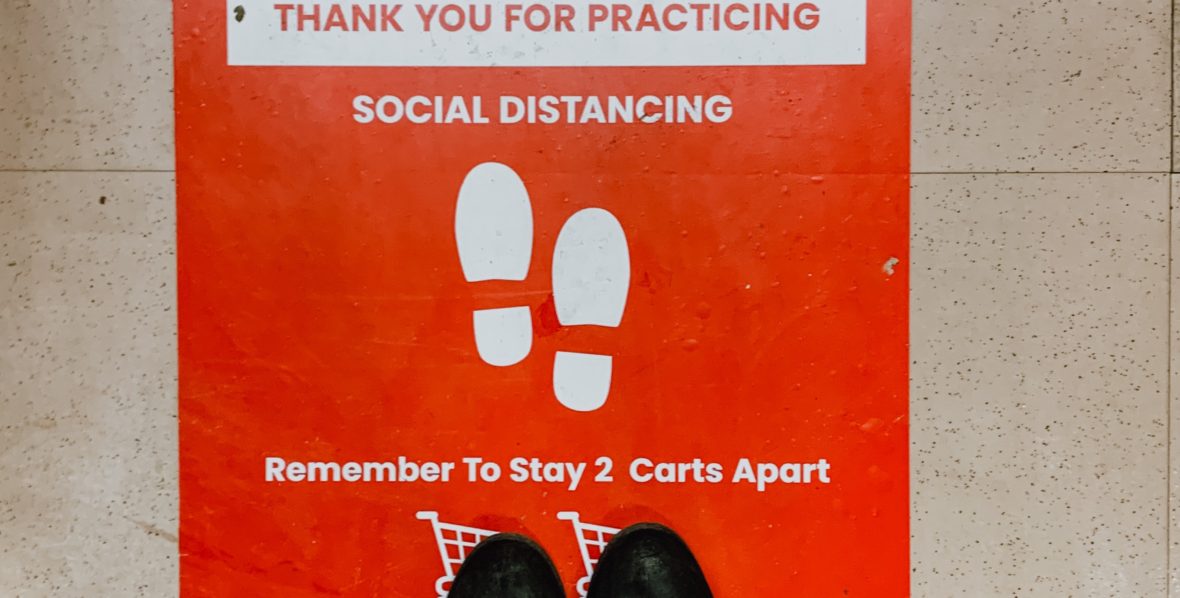PROJECT OVERVIEW
Metametrix has teamed up with qualitative market researchers, Insight Safari, to build a real time view of the rapidly changing consumer landscape.
Each week we engage a panel of 500 Americans of various backgrounds for discussions on how the coronavirus pandemic is shaping human behavior, experiences, feelings and beliefs. To get a full understanding of participants’ experiences we’re examining the results as qualitative researchers and text analysts. Over time we’ll track which changes have lasting cultural impact and change consumer behavior, and which are temporary adjustments to an unprecedented crisis.
EMERGING THEMES
ESCALATING ANXIETY: LEAVING HOME
Anxiety about leaving home continues to escalate. Especially for people in urban environments, the very act of going outdoors creates a new level of fear, since just a few steps outside the front door may mean walking into coronavirus uncertainty. For those in suburban and rural environments, the confines of the front yard are considered safe… but even a walk in the neighborhood or a park visit may have unknown consequences.
This week, we saw that even trips outside to exercise, go out for a walk or get some fresh air were less frequent, with the main reason to leave being grocery shopping or a trip out for needed household essentials, medications or pet care needs.
Upon return home from an essential errand, the fear and anxiety doesn’t stop! While some express a sense of relief at getting back to the “safe zone,” they can’t help but agonize over what they’ve brought back in with them, and whether they have exposed themselves or their family members to the contagion.
- We are still seeing complex process of disinfection, cleaning and clothes-washing upon return from an errand, to mitigate the risk of a trip outside.
An emotional topic of conversation was the divide between people who feel they must leave the house to check on an elderly or sick family member, because that person depends on them… and the almost equal number who are avoiding their most vulnerable family members for fear of bringing the infection to them. Mixed feelings of fear, sadness, guilt and stress result on both sides of this equation.
| “When going out I’m usually only going for groceries or the gas station. When I’m outside I see a lot of people also outside. I see more than what I would expect. Sometimes I wonder if people are really outside for essentials or are just out and about for no reason really. I feel like some are not taking this seriously. I feel extremely anxious going out because I’m afraid that I could possibly catch the virus and I’m also anxious because a lot of food is out of stock and also paper products and cleaning supplies. When I get home after going out, I feel a lot better, relieved to be away from people but also worried that maybe I could have gotten the virus from someone.”
– NicoleD, 35, Millennial, Suburban |
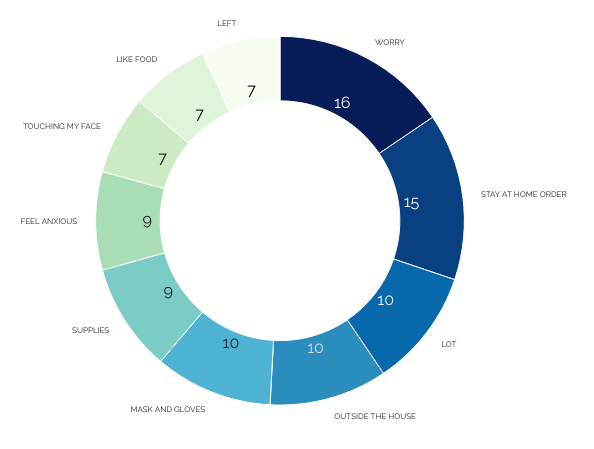 Key concepts uncovered in Metametrix text analysis reinforce the qualitative findings mentioned above. The concerns of leaving the house mean having to think about safety and health for something that was once very routine. The need for groceries and supplies are often the only trip outside the home.
Key concepts uncovered in Metametrix text analysis reinforce the qualitative findings mentioned above. The concerns of leaving the house mean having to think about safety and health for something that was once very routine. The need for groceries and supplies are often the only trip outside the home.
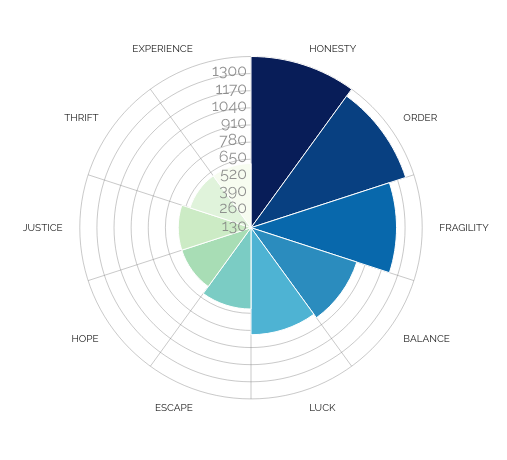
The values identified in the community comments emphasize what’s required of all of us when leaving the house. The health of our communities depends on us to act honestly following the stay-at-home rules. Making a trip to the store require more organization and order to stay safe and protect the fragility of our common health.
CHAOS ABOUNDS: SHOPPING
Given the fact that shopping is the main reason folks are leaving the house, it follows that we wanted to explore how that experience is changing.
The customer experience in retail, whether online or in-store, has turned completely upside-down in the current environment, in myriad ways. A few key themes we uncovered and will continue to unpack in weeks to come, for in-store shopping specifically:
Lack of Availability
Many report that their desired items are now habitually out of stock. While the meme-worthy toilet paper and hand sanitizer top the list, this extends across a number of categories. Consumers are in a position of never knowing what will be in stock at which retailer, with many categories simply being catch-as-catch-can.
- Food, personal care items and household paper goods are those most heavily impacted and often requiring multiple visits to multiple stores to complete the shopping list.
- Meat, fresh produce, fresh vegetables and dairy are heavily impacted. These staples can be very difficult to secure all in one trip, and consumers often skip items on their list or make substitutions.
This Used to be Fun
An activity that was, for many people, enjoyable… and for others comfortable and reliable… is now almost universally confusing and stressful. Some miss browsing for leisure and shopping what they now must admit are “non-essential” retail categories. Still others stress out because their predictable routines are completely upended.
An important note: as consumers itch to get back to normal, a few are making personal decisions about what they consider essential. From home improvement products to kids’ crafts to books, several have their personal categories that, for their own mental health, they’ve decided to shop for no matter what.
In-store Experiences
These are disturbingly different than ever before. New protocols may include wiping down carts, a limit on the number of patrons, item restrictions and quantity restrictions, plexiglass between the customer and the cashier, and entire areas of the store being roped off. Even as many appreciate these important efforts and applaud retailers handling the situation responsibly, it also creates an atmosphere of unrest and discomfort.
Variability of Experiences
Depending on the area of the country in which the respondent lives, store experiences can vary widely in terms of COVID-19 impact and cautionary measures.
| “There really is no best thing about shopping now. The worst things are stores are crowded, and availability of products are limited. What I miss most about shopping before is if I went out on a Tuesday morning at 8am or any evening after 9pm the stores would be empty. Now many stores are closing around 8pm, and early morning they’re crowded with people looking to by TP or those other items people are hording. I’m hoping and ready for things to go back to normal. I hope none of the current changes stick.”
– BenT, 39, Millennial, Suburban |
The virtual “no-touch” shopping experience has shifted dramatically as well, in a few key ways:
Delivery Windows are Wonky
- Timing for shipping of items is all over the place, and has become relatively unpredictable. While on some levels customers understand why, they are alarmed, confused and frustrated by not being able to get what they need when they want it. After years of living in a Prime/Prime Now reality, having these benefits taken away so suddenly has resulted in nothing less than culture shock.
Curbside Pickup: Increased Frequency
- Consumers appreciate the convenience and low-risk aspect of these services, but struggle with a lack of availability as pick-up timeslots are few and far-between.
Learning Curve
- By necessity or because they want to minimize risk, more and more shoppers are trying out new services and apps they may have never tried before. This means they are struggling to learn how these things work amid a crisis, when there is no such thing as “normal operations” for retailers.
- Shoppers do appreciate efforts such as the waiving of delivery or subscription fees during the coronavirus crisis.
Frustration Rising
- Customers express frustration with online retailers, especially mass retailers such as Amazon. It’s confusing to understand what is available, when it will actually arrive, and whether the information being given is trustworthy and reliable. Customers are worrying about price-gouging and trust (or lack thereof) is a key issue.
| “One great shopping experience I had recently was picking up a grocery order from Whole Foods. Even though it was difficult to find the open slot for the pick-up, once I did, the process couldn’t have been easier. The store had everything on my list except for one item. When I got to the store, I parked in one of the reserved parking spaces and the employee brought out my bags within two minutes. I opened my trunk and she put the bags in the trunk, and I left. Such a great experience and I will likely continue ordering grocery pickup once the pandemic is contained. One poor shopping experience I had recently was going to Walmart last week for cleaning supplies. The store was very crowded and many people were not practicing social distancing. In addition, everyone working there seemed on edge and tired (this is totally understandable though). The worst thing about shopping now is having to be afraid of catching a disease while in a store, as well as many items being sold out. The best part about shopping is that many online retailers are offering great deals. I miss being able to go shopping without being worried about getting sick or getting too close to other shoppers. The one thing I hope sticks after this is over is the increased cleaning protocols that many stores and restaurants have put into place.”
– ZackS, 31, Millennial, Urban |
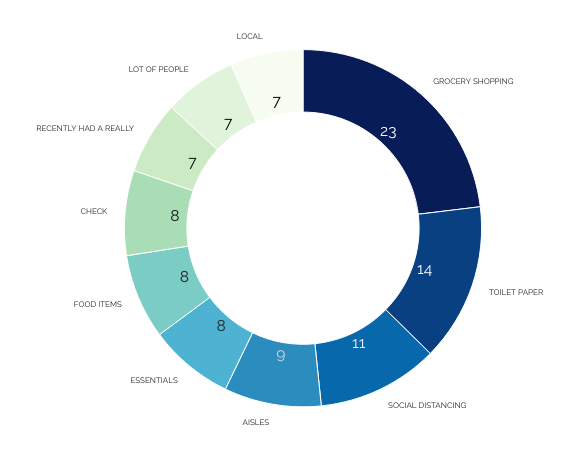
Consistent with the qualitative findings grocery shopping is the primary shopping event with toilet paper as the most mentioned product. The grocery store experience has some positives—less crowded aisles– but also frustration with sold out products.
To get a sense for the bigger picture of customer experience Metametrix scanned the web to analyze concepts and ideas being shared across the Internet now.

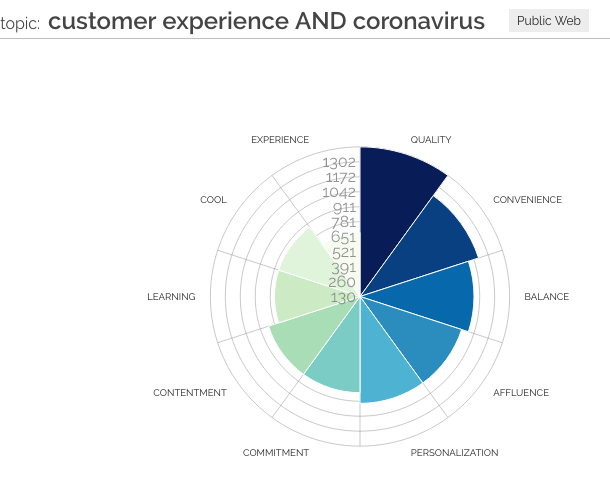
These themes on the left illustrate just how the marketplace has changed… but our values on the right are steady looking for quality products, convenience in the process, a balance in what to expect and the interest in personalizing, or getting exactly what you want. Thus, a huge disconnect in this moment between what customers have come to expect and what they are currently able to have. Surely this will have cultural repercussions, depending on how long it takes for the supply chain to right itself and return to some sense of normalcy.
THE DRIVING NEED: A SENSE OF ORDER
To understand overall values and motivators we used Metametrix to examine three dominant topics from the community comments this week: “Social distancing,” “grocery shopping” and “stay at home.”
- The overwhelming need is one for order in these key areas.
- People are looking for a way to keep their families and lives on track and stay safe as they leave the house or go shopping. We as a nation desperately want to find a new normal.
- Their experiences and their interactions while in-store or online is a mixed bag right now. But brands will soon need to focus on their new, and hopefully temporary, customer journey.
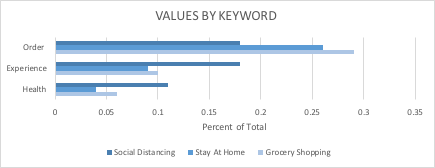
KEY POINTS TO CONSIDER
- How can your brand offer reassurance, comfort and solace at such a stressful time?
- What can your brand do to reinforce home as an oasis of peace?
- How can your brand arm consumers to feel strong and confident as they venture out of their safe space to take care of their household and procure what they need?
- Can you help consumers make a plan and regain a sense of order and control in their day-to-day lives?
- Whether instore or online, understand shoppers feel overwhelmed, disoriented and confused. They’ll need extra hand-holding and utmost transparency from your brand.
NEXT WEEK’S QUESTIONS
Beginning April 11…
- With so much information and advice flying around, how do consumers know who to trust? Which sources do they trust, and why?
- How concerned are consumers about the US food supply and continued availability of staple fresh food items such as meat and dairy?
